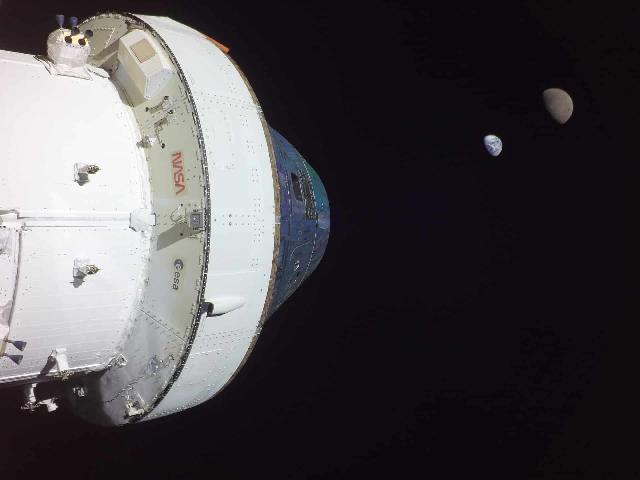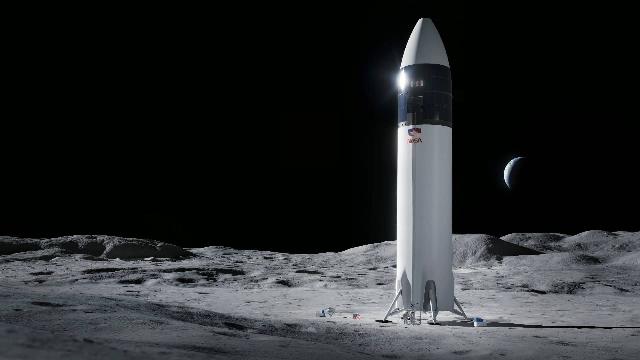The return of American astronauts to the Moon is expected in 2026, a couple of years late from the original plans for the Artemis III mission. As the internal evaluation of the entire project at the space agency showed, these deadlines will be disrupted with a very high probability. Apart from the problems with the spacesuits (they are not ready) and the Orion ship's heat shield (it behaved worse than expected in the first test flight), SpaceX also fails: the company does not have time to finish Starship HLS on time.
In June, the U.S. Accounting Chamber (GAO) published an annual report on the status of NASA's priority promising projects. The document is a real Klondike for anyone interested in the "inner kitchen" of the American space agency. In search of "gold", employees of the SpaceNews publication broke through the jungle of bureaucratic formulations. Journalists managed to find a mention of the internal audit of the National Aeronautics and Space Administration of the United States (NASA), conducted at the end of 2023.
At that time, the document was not publicly available, and even now its full text is not available. However, there are eloquent excerpts in the GAO report. So, among other things, one of the indispensable elements of the Artemis III mission and the entire new American lunar program, the SpaceX Starship HLS lander, received a disappointing assessment. According to the agency, the minimally functional ship will fly in February 2028 with a probability of no more than 70 percent. This is about a year and a half later than the planned landing date (September 2026).
It is important to note two points. Firstly, the probability of 70 percent is a bureaucratic threshold, on the basis of which NASA has the right to indicate a key point in its plans. The assessment is established as a result of a comprehensive analysis of the progress of the project (or its parts), financial costs, budget overruns, the fulfillment of intermediate goals and many other nuances. Simply put, based on how the agency now sees the work on Starship HLS, we can be sure that by February 2028 it will be ready only without the slightest additional delays and only if all tests are successful the first time.
Secondly, SpaceX is a third—party organization, and despite the scrupulous control of its work under the HLS contract by NASA, many details remain out of the agency's field of view. Therefore, all assessments are carried out according to the actual completion of the completed formal stages of development and the stated deadlines for achieving the following. But in Elon Musk's space company, the principle of iterative development with rapid testing of solutions reigns, which is poorly compatible with the bureaucratic regularity of government customers. That is, it is difficult for the agency to predict the speed of completion of key stages and the further progress of work. This means that they almost certainly always take the most conservative estimates.
Apparently, senior NASA officials also understand this. For example, the assistant administrator of the agency, Cathy Koerner, at the Council of the National Academy of Sciences of the United States for Space Exploration on June 7, once again confirmed plans to launch Artemis III at the end of 2026. She announced the next key milestone in the preparation of the historic mission: a demonstration of fuel transfer between ships in low-Earth orbit, which is scheduled for 2025. Elon Musk, after the successful tests of Starship and Super Heavy, announced about the same time frame.

View of the Moon against the background of the Earth from aboard the Orion spacecraft during the Artemis I mission
Image source: NASA, ESA
In addition to the readiness of the lander to deliver astronauts to the lunar surface, the Atremis program has other problems. So, the Orion ship's heat shield behaved worse than it should have during the Artemis I test flight. This has raised concerns, and NASA experts have not yet decided how serious improvements are required. In addition, a big and very painful issue is related to spacesuits for extravehicular activity on the Moon. There are none, and it is unknown whether it will be possible to complete their development in the next two years.
As Kerner explained, discrepancies in deadlines and schedules are inevitable, especially between different reports that use different readiness metrics. The Accounting Chamber operates with financial and time parameters, NASA also takes into account technical readiness, which has not yet been reflected in official documentation. Nevertheless, the agency always has backup plans in case of failure of backup plans.
For example, as an alternative to Artemis III, a mission is being considered to test the interaction of Orion and Starship HLS ships in low-Earth orbit. This scenario is provided for a situation when the heat shield will require a complete redesign, and there will be no spacesuits, and they will not have time to send the lander to the Moon in advance, and the deadlines will be too "gone" for 2026.

